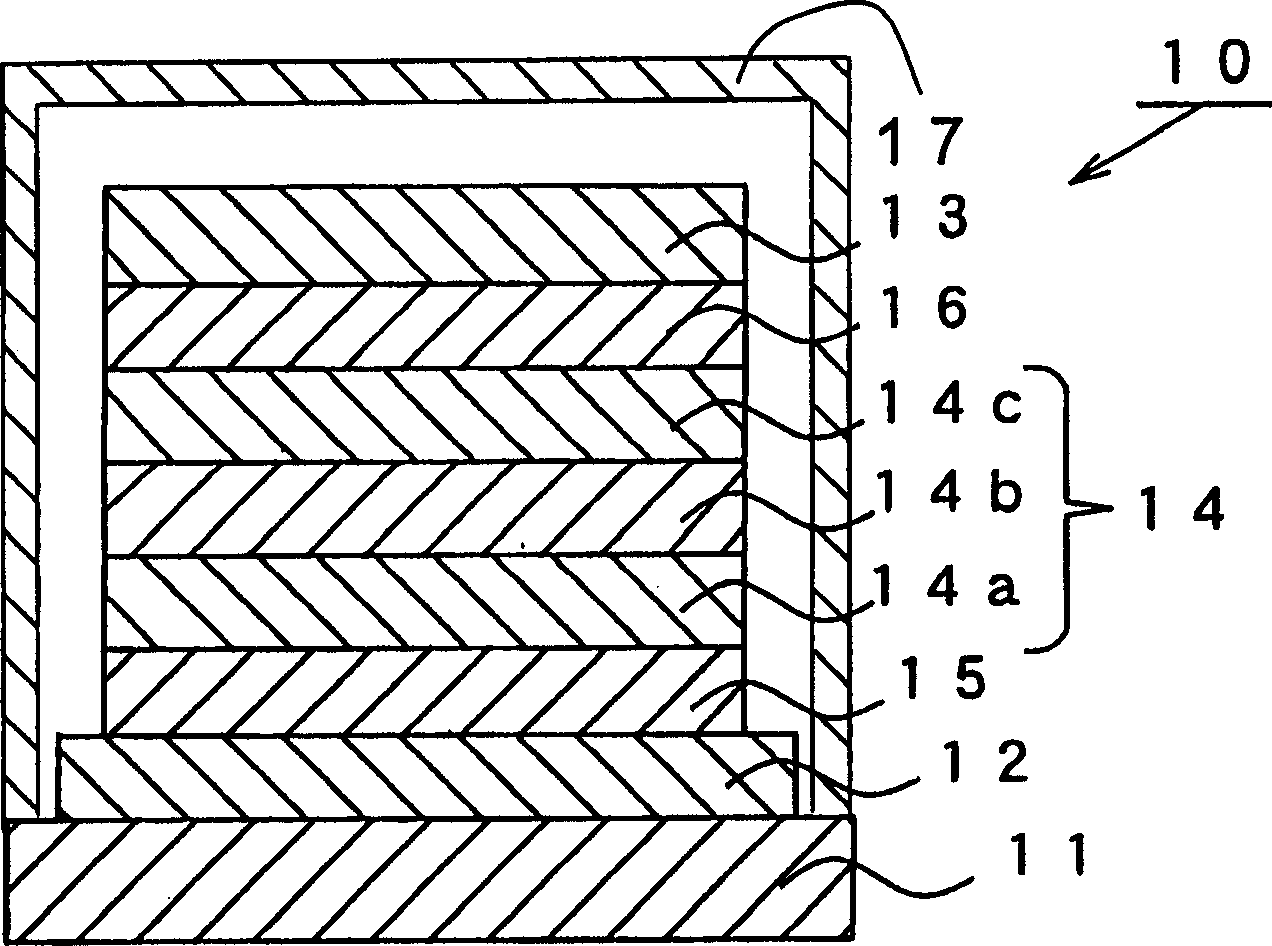Organic electroluminescence device and method of producing the same
An electroluminescent device, organic light-emitting layer technology, applied in the direction of electroluminescent light source, electric light source, lighting device, etc.
- Summary
- Abstract
- Description
- Claims
- Application Information
AI Technical Summary
Problems solved by technology
Method used
Image
Examples
Embodiment 1
[0041] An anode layer 12 formed of an ITO layer having a thickness of 150 nm was formed on one surface of a transparent glass substrate 11, and the substrate / anode layer structure was subjected to substrate cleaning in which alkali cleaning and pure water cleaning were performed successively, and after being After drying, ultraviolet ozone cleaning is performed.
[0042] Then, the anode layer 12 was treated with plasma of an oxygen-argon mixed gas having an argon content of 10 vol % for two minutes at a pressure of 2 Pa and a radio frequency power of 200 W. Before the plasma treatment, the work function of the surface of the anode layer 12 was 4.6 eV, and after the plasma treatment, its work function was about 5.7 eV.
[0043] After the anode layer 12 is subjected to plasma treatment, by utilizing a vapor deposition device such as a graphite crucible at a deposition rate of 0.1 nm / s and about 5.0×10 -5 A vacuum degree of Pa deposited a TPTE layer of an amine-based low-molecul...
Embodiment 2-9
[0054]For the production of the organic EL devices of Examples 2-9, except that the argon content in the oxygen-argon mixed gas used for plasma treatment is 30vol%, 43vol%, 49vol%, 55vol%, 59vol%, 69vol%, 82vol% % and 89 vol%, the others are the same as those of the organic EL device 10 of Example 1. The work function of the surface of the anode layer 12 after plasma treatment is 5.7-5.9 eV. As in the case of the power coefficient of the organic EL device 10 of Example 1, the power coefficients of the organic EL devices 10 of Examples 2-9 were measured before and after the heating test and the light irradiation test. Table 1 also shows the results of the retention ratios of the power coefficients of the organic EL devices of Examples 2-9.
[0055] heating test
light test
Example
Argon content (vol%)
Power Coefficient Retention
Power Coefficient Retention
1
10
100%
70%
2
30
101%
80%
...
PUM
| Property | Measurement | Unit |
|---|---|---|
| Thickness | aaaaa | aaaaa |
| Thickness | aaaaa | aaaaa |
Abstract
Description
Claims
Application Information
 Login to View More
Login to View More - R&D
- Intellectual Property
- Life Sciences
- Materials
- Tech Scout
- Unparalleled Data Quality
- Higher Quality Content
- 60% Fewer Hallucinations
Browse by: Latest US Patents, China's latest patents, Technical Efficacy Thesaurus, Application Domain, Technology Topic, Popular Technical Reports.
© 2025 PatSnap. All rights reserved.Legal|Privacy policy|Modern Slavery Act Transparency Statement|Sitemap|About US| Contact US: help@patsnap.com

